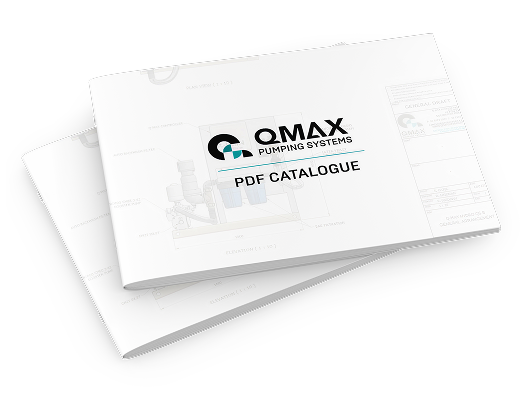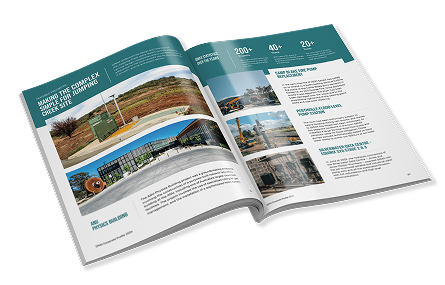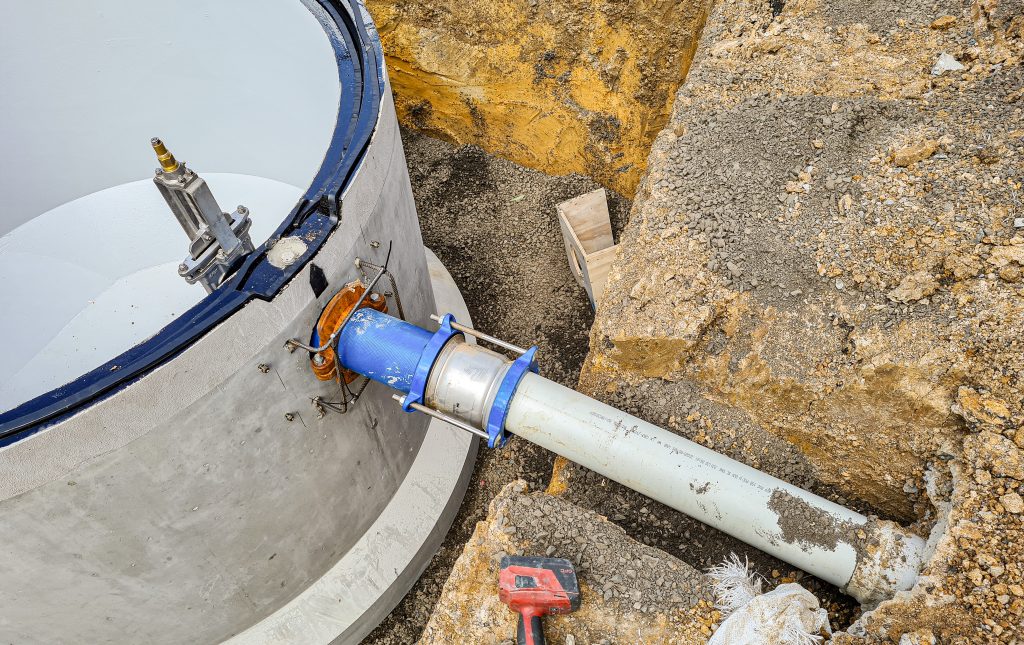Resources
resources
quick links
Downloads
Spec Sheets & Catalogues
SPEC SHEETS
pRODUCT cATALOGUES
CONTACT US
HAVE A PROJECT IN MIND? TALK TO OUR EXPERTS

Pump System Drawings & Specs Library
Explore our comprehensive library of pump system drawings and specifications. Access detailed technical data to support your projects.
SOLUTIONS
Explore our pump solutions
Fibreglass Pump Stations
Fortis: Precast Concrete Pump Stations
Service & Parts
Solids Handling
Wastewater
Water Boosters
Harbour Shores Sewer Pump Station
QMAX was engaged by Burchills to undertake the comprehensive design and construction of a new sewer pump station for the prestigious Harbour Shores development in Biggera Waters on the Gold Coast. This crucial infrastructure was meticulously designed to manage the wastewater from an additional 635 apartments, providing a robust and reliable system for the high-rise community.
Halcyon Beerwah Sewer Pump Station
QMAX was engaged to undertake the comprehensive design and construction of a new wastewater pump station for the Stockland Halcyon aged care retirement village in Beerwah. This crucial infrastructure was designed to handle the community’s wastewater, providing a robust and reliable system for the village’s residents.
QMAX CAPABILITIES
proudly engineering pumping solutions down under for 50 years

videos
Project reviews, product & application videos
FAQs and knowledge share
Staged development poses unique complexities because pump stations must serve dual purposes—handling current low flows efficiently while accommodating future peak capacities. Unlike conventional installations with predictable loads, staged developments create constantly evolving operational parameters that can span decades.
The infrastructure must be planned from the outset to accommodate ultimate build-out scenarios, even when initial flows represent only a fraction of design capacity. This includes sizing pump wells, access openings, rising mains, and equipment to avoid costly retrofits later. When design assumptions prove inadequate, catastrophic operational failures occur, affecting connected infrastructure, service reliability, and surrounding development viability.
Flow variability presents the most significant challenge—early development phases generate lower-than-optimal flows, creating retention time and odour management issues. Climate considerations make these scenarios more complex, as extended low-flow periods can lead to septicity problems in rising mains.
Infrastructure sizing directly impacts vulnerability—oversized installations during early phases create inefficient operation and maintenance challenges. Construction timing also matters, as installations completed for ultimate capacity may face unexpected operational difficulties during extended low-flow startup periods. Regulatory requirements often demand full design approvals upfront, regardless of phased implementation schedules.
Successful implementation requires flexible approaches tailored to development-specific conditions. Modular design enables incremental capacity upgrades without major infrastructure rework. A critical best practice involves installing adequately sized incoming power supply for ultimate pumps initially retrofitting electrical infrastructure later is typically unfeasible and extremely costly.
Pump selection strategies offer highly effective solutions, using temporary or smaller duty pumps initially with provisions for equipment swapping or additions later. Adjustable VFD controls enable fine-tuning for low-flow scenarios, though this approach has hydraulic efficiency limitations. Proper rising main planning, in some cases that includes installing both initial and ultimate mains simultaneously, prevents costly future disruption along established routes.
Staged development calculations must account for unique phasing factor combinations. Fundamental planning involves determining maximum ultimate flow requirements while ensuring efficient operation during extended low-flow periods. This requires thorough development analysis including build-out timing projections, demographic studies, and regulatory approval pathways.
Design calculations must consider worst-case scenarios, including potential delays in development progression that extend low-flow operational periods. Total system flexibility—pump capacity, control systems, and infrastructure expandability—must accommodate all development phases with appropriate operational efficiency. Professional engineering analysis ensures all phasing variables are properly integrated into comprehensive staged development strategies.
Operational planning can make or break staged development outcomes regardless of design quality. Managing low initial flows requires specific strategies—dosing systems may be necessary to mitigate retention time effects and reduce septicity risks in rising mains.
Implementation sequencing requires careful coordination to minimise operational challenges during transition periods. Temporary solutions like containerised dosing systems or vacuum truck pump-out options provide crucial interim protection, though careful cost analysis of extended arrangements is essential. Quality maintenance access and redundancy planning from day one ensures installations can adapt to changing operational requirements throughout all development phases.
Buoyancy poses unique threats because pump stations are typically only partially filled, making them vulnerable to uplift forces. When groundwater rises above the pump station base, Archimedes’ principle applies—the structure displaces water and experiences upward buoyant force equal to the displaced water’s weight.
Unlike storage tanks that remain full and heavy, pump stations operate with varying fluid levels, reducing downward force while maintaining buoyant uplift. When buoyant forces exceed the pump station’s weight and anchoring capacity, catastrophic damage occurs to connected pipelines, electrical systems, and surrounding infrastructure.
Groundwater variability presents the most significant challenge—seasonal variations, heavy rainfall, and flooding can rapidly elevate water tables beyond design assumptions. Climate change makes these scenarios more frequent and severe.
Soil conditions play crucial roles in buoyancy forces and mitigation effectiveness. Poorly draining soils trap water around structures, maintaining high hydrostatic pressures. Pump station size directly impacts vulnerability—larger installations displace more water and generate greater buoyant forces. Construction timing also matters, as installations completed during dry periods may face unexpected challenges when seasonal water tables rise.
Buoyancy calculations must account for unique site factor combinations. Fundamental calculations involve determining maximum potential buoyant force based on water volume displacement when groundwater reaches highest anticipated levels. This requires thorough site investigation including historical groundwater data, soil permeability testing, and flood risk assessment.
Design calculations must consider worst-case scenarios, including potential surface-level groundwater inundation. Total downward force—pump station weight, ballast, and anchoring capacity—must exceed maximum buoyant force with appropriate safety factors. Professional engineering analysis ensures all site-specific variables are properly integrated into comprehensive buoyancy management strategies.
Successful mitigation requires multi-layered approaches tailored to site-specific conditions. Increasing structural weight through heavy materials, ballast, or additional concrete provides direct counterforces. A critical best practice is filling pump stations with water immediately after installation—providing instant ballast protection during vulnerable construction periods.
Anchoring systems offer highly effective solutions, particularly for horizontal FRP tanks. Engineered tie-down anchors provide reliable uplift resistance without expensive concrete slabs. Proper soil backfill and compaction create additional weight and lateral resistance, with well-graded granular materials enhancing drainage while minimising water accumulation.
Construction methodology can make or break prevention efforts regardless of design quality. Maintaining dry excavation conditions during construction is critical—dewatering systems must remain operational until backfilling provides adequate stability.
Installation sequencing requires careful coordination to minimise vulnerability periods. Filling pump stations immediately after installation provides crucial interim protection. Perimeter drainage systems must be functional before final backfilling for long-term groundwater control. Quality control ensures design specifications are met, and installations can withstand operational buoyancy challenges.
Movement is the primary enemy of seal integrity. Even minor shifts during construction or operation can compromise sealing systems and lead to catastrophic leaks. The fundamental principle is simple: movement equals seal failure.
Professional installations treat every gravity inlet as a thrust block, implementing comprehensive restraint systems that prevent both lateral and longitudinal movement. This approach prevents decades of operational headaches and costly remediation work that inevitably follows inadequate installations.
Inlet leaks create cascading problems extending far beyond the pump station. Infiltration from groundwater causes excessive pump operation and can overwhelm downstream infrastructure during rainfall events, leading to environmental overflows. Exfiltration of raw sewage pollutes waterways, causes soil erosion around structures, and creates biological hazards when it surfaces.
The regulatory implications are severe—EPA prosecution can result in significant financial penalties. Additionally, infiltration compromises biological treatment processes by creating imbalanced water-to-effluent ratios at treatment plants.
Effective sealing requires multiple layers of protection. The foundation is a permanent hydrostatic seal device installed inside the penetration, mechanically activated to allow controlled flexibility during construction while maintaining long-term integrity.
External thrust blocks provide the second protection layer, properly integrated through scabbling—roughening the concrete surface for mechanical bonding. The final layer involves specialised epoxy paste application over the seal device, formulated specifically for long-term immersion in aggressive sewage environments.
Proper design treats each penetration as a unique engineering challenge rather than simply coring convenient holes. Thrust block reinforcing bars are overlapped, cranked around openings according to project-specific calculations, and epoxied into walls to prevent pipe movement.
Wall reinforcement must be coordinated with overall structural requirements, particularly around critical areas like swift lift locations. Project-specific arrangements maintain structural integrity while accommodating inlet connections, ensuring penetrations enhance rather than undermine pump station stability.
Success depends on meticulous attention to detail and refusing shortcuts. Proper scabbling creates the mechanical key necessary for external thrust blocks to achieve structural integration. Without this preparation, protection layers cannot perform effectively.
Installation sequencing must prioritise seal integrity throughout construction—proper positioning, tensioning, seal activation, and precise formwork. Quality control at each stage ensures subsequent layers perform effectively. Most importantly, experienced professionals must execute the work, understanding that critical infrastructure demands proven techniques with no acceptable shortcuts.
Fixed ladders introduce significant safety risks that demand serious attention. The primary concern is facilitating unsafe practices by encouraging unauthorised access or tempting operators to bypass proper confined-space entry protocols. Tragic incidents have occurred where operators used ladders for quick fault access, only to be overcome by deadly H2S gases.
Structural integrity presents another major challenge. Older galvanised ladders are vulnerable to corrosion in harsh sewer environments, creating fall risks as metal deteriorates. Even with modern materials, ongoing maintenance is essential for continued safety and compliance with Australian standards AS1657 and AS2865.
When properly designed and maintained, fixed ladders provide undeniable operational benefits. The primary advantage is immediate access—eliminating the need to setup or fetch portable ladders that are often inadequate due to depth or other site-specific requirements. During emergencies or routine maintenance, this accessibility enables rapid response and system restoration.
Modern designs have evolved significantly. Materials like FRP (Fibre Reinforced Polymer) offer corrosion resistance and non-slip surfaces ideal for sewer environments. Similarly, 316-grade stainless steel provides exceptional durability. Enhanced safety features such as extendable side grip stiles further improve operator safety during entry and exit.
Australian standards set stringent guidelines directly influencing ladder implementation. AS1657 governs fixed ladder design, while AS2865 addresses confined space entry requirements. The WSA Sewage Pumping Station Code specifically advises against including ladders unless explicitly required by local Water Authorities.
These regulatory constraints mean fixed ladders aren’t simply design choices—they must be justified by operational necessity and implemented with rigorous safety standard adherence. Local requirements vary significantly, making early consultation essential for any project considering fixed ladder installation.
Fixed ladders significantly impact pump well functionality and design requirements. In smaller installations, ladders clutter limited space, complicating access to pumps, valves, and critical components. This often necessitates larger pump wells than otherwise required, increasing construction costs and site footprint.
Debris catchment presents operational challenges—ladders trap rags and foreign objects, increasing maintenance frequency. While solutions like inlet macerators can mitigate this issue, they add equipment and costs, often making portable confined-space equipment more cost-effective.
The decision requires balancing convenience against safety, cost, and regulatory compliance. Fixed ladders offer immediate access and operational efficiency but come with higher capital costs, increased maintenance, and potential safety risks. Portable systems provide greater safety control and lower costs but require setup time and proper training.
Consider specific operational needs, site constraints, regulatory environment, and maintenance capabilities. For many installations, portable systems offer safer, more cost-effective solutions maintaining full confined-space entry compliance.
Emergency storage refers to the calculated capacity within a sewer system designed to temporarily hold wastewater when primary pump systems fail or undergo maintenance. This critical feature ensures that essential services continue uninterrupted, preventing environmental damage, public health risks, and costly clean-up operations.
Incorporating emergency storage into pump station design is not just best practice—it’s a necessity. The benefits include:
-Operational Continuity: Provides essential breathing room for addressing unforeseen failures, maintaining the system’s functionality during power outages or mechanical malfunctions.
-Environmental Protection: Acts as a protective barrier against untreated sewage spills, preserving water quality and safeguarding natural ecosystems.
-Regulatory Compliance: Ensures adherence to stringent environmental regulations, avoiding hefty fines and reputational damage.
-Cost Efficiency: Reduces the financial impact of emergency responses and repairs by providing a buffer zone during critical failures
Calculating the necessary storage volume is a meticulous process involving:
-Inflow Rates: Analysing both average and peak wastewater flow rates entering the pump station.
-Response Time: Estimating the time needed to identify, respond to, and rectify pump station failures.
-Redundancy Measures: Evaluating backup systems such as standby pumps or alternative power supplies, which can alleviate the pressure on storage requirements.
-Risk Assessment: Understanding site-specific vulnerabilities and potential failure scenarios to optimise storage capacity effectively.
A robust emergency storage strategy often combines multiple approaches, including:
-Wet Wells: Designing oversized wet wells capable of accommodating increased wastewater volumes during critical incidents.
-Storage Tanks: Installing dedicated storage tanks adjacent to pump stations to enhance capacity and flexibility.
-Gravity Sewers: Utilising strategically oversized gravity sewer lines to temporarily store excess flows during emergencies.
-Hybrid Systems: Integrating various storage methods to create a resilient, multi-layered defence against potential disruptions.
Emergency storage acts as the backbone of a resilient sewer system. By incorporating intelligently designed storage solutions, operators can minimise service disruptions, reduce environmental risks, and ensure compliance with ever-tightening regulations. It’s about building a system that doesn’t just survive disruptions—it thrives in the face of them.






